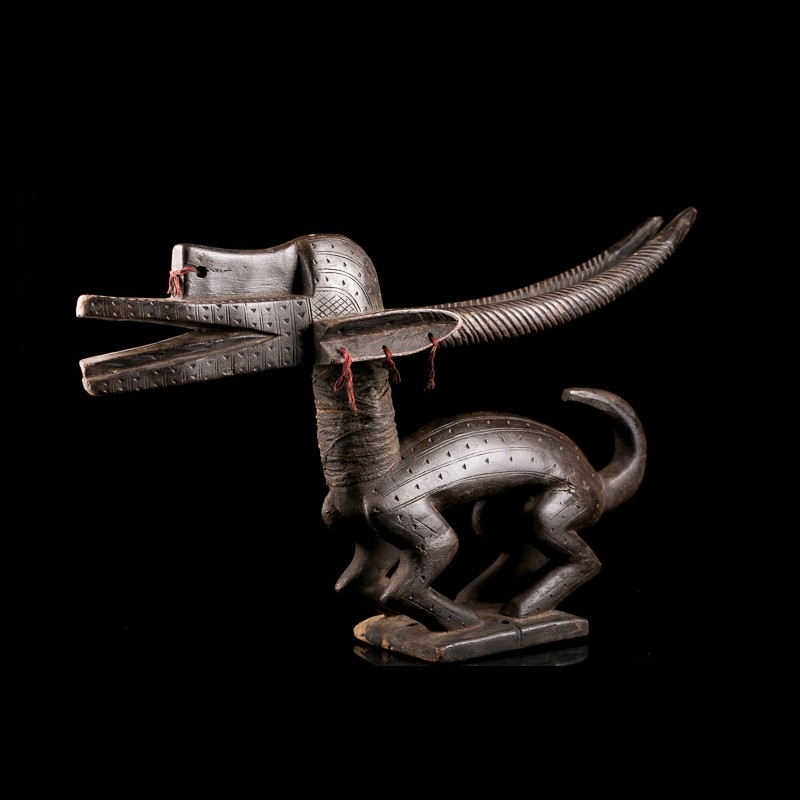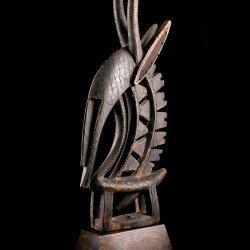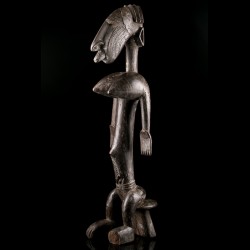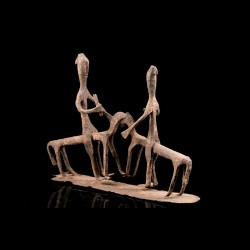













The Ciwara des Bambara society was akin to an agrarian brotherhood that taught the principles of agriculture and aimed to stimulate collective labor. The masks danced in the fields, before the rainy season, during the clearing in the dry season and during the harvests.
Masks such as this crest, depicting an antelope, were exhibited in pairs, a male being always associated with a female. They evoked respectively the sun and the earth, and the analogy between the reproduction and the sowing of the field. We will appreciate the radically geometric and abstract shapes of this remarkable piece. Each element of the body is linked to a value which must be demonstrated by the cultivator.
Thus, the arched body and bent legs served as a model for power and speed. The long curved and ringed horns evoke the mythical antelope born to Mousso Koroni, the foster mother who taught men the art of cultivating the land. They also suggest the stalks of millet bending under the weight of the ears, a symbol of fertility.
The elongated and outstretched ears illustrate intelligence on the alert.
Origin :
A large part of the objects in this collection were given as a donation to the Geneva Museum of Ethnography in the 1980s. We are committed to providing detailed information on request.
Data sheet
You might also like

The Ciwara des Bambara society was akin to an agrarian brotherhood that taught the principles of agriculture and aimed to stimulate collective labor. The masks danced in the fields, before the rainy season, during the clearing in the dry season and during the harvests.
Masks such as this crest, depicting an antelope, were exhibited in pairs, a male being always associated with a female. They evoked respectively the sun and the earth, and the analogy between the reproduction and the sowing of the field. We will appreciate the radically geometric and abstract shapes of this remarkable piece. Each element of the body is linked to a value which must be demonstrated by the cultivator.
Thus, the arched body and bent legs served as a model for power and speed. The long curved and ringed horns evoke the mythical antelope born to Mousso Koroni, the foster mother who taught men the art of cultivating the land. They also suggest the stalks of millet bending under the weight of the ears, a symbol of fertility.
The elongated and outstretched ears illustrate intelligence on the alert.
Origin :
A large part of the objects in this collection were given as a donation to the Geneva Museum of Ethnography in the 1980s. We are committed to providing detailed information on request.


